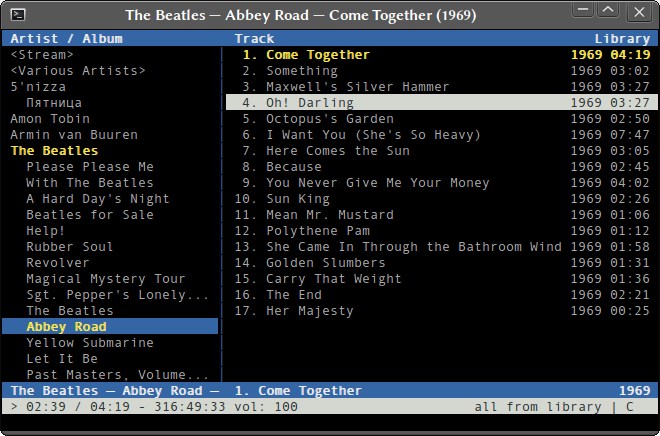
Next = Math.floor(Math.random() * sounds. It has extremely flexible metadata editing and searching capabilities. It provides many ways to view your local library, and supports streaming audio and feeds (podcasts, etc). Quod Libet Alternatives The best Quod Libet alternatives based on verified products, community votes, reviews and other factors. Quod Libet is a cross-platform audio/music management program. It lets you display and edit any tags you want in the file. A extensible Music player with Podcast support, web radio, playlists and many more. It lets you make playlists based on regular expressions (don't worry, regular searches work too).
Quod libet smart playlist how to#
set event handlers on all audio objectsĭocument.getElementById(current + '').classList.remove('playing') ĭocument.getElementById(current + '').classList.remove('paused') ĭocument.getElementById(current + '').classList.add('playing') ĭocument.getElementById(current + '').classList.add('paused') Quod Libet Website: Version: 1.0 Engine: Gstreamer It's designed around the idea that you know how to organize your music better than we do. The remainder of the array from FFTW contains frequencies above 10-15 kHz.Īgain, I understand this is probably working as designed, but I still need a way to get more resolution in the bottom and mids so I can separate the frequencies better. However, since FFTW works linearly, with a 256 element or 1024 element array only about 10% of the return array actually holds values up to about 5 kHz. These should be somewhat evenly distributed throughout the spectrum when interpreting them logarithmically. I am also applying a Hann function to each chunk of data to smooth out the window boundaries.įor example, I test using a mono audio file that plays tones at 120, 440, 1000, 5000, 1500 Hz.
Quod libet smart playlist download#
I have tried with window sizes of 256 up to 1024 bytes, and while the larger windows give more resolution in the low/mid range, it's still not that much. QuodLibet Music Player Features in Quod Libet Free and open-source Extensible using plugins e.g export playlists to folders, change language, hide menu bar Audio encoder Music tagger Theme customizable Advanced file renaming system Download and save music lyrics Supports regex searching e.g. But with so little allocation to low/mid frequencies, I'm not sure how I can separate things cleanly to show the frequency distribution graphically.

I understand that audio is logarithmic, and the FFT works with linear data. To create a blank playlist, select the Playlist Browser and click New. Everything works, except the results from the FFT function only allocate a few array elements (bins) to the lower and mid frequencies. I run an FFT function on each buffer of PCM samples/frames fed to the audio hardware so I can see which frequencies are the most prevalent in the audio output. I am trying to build a graphical audio spectrum analyzer on Linux.


 0 kommentar(er)
0 kommentar(er)
